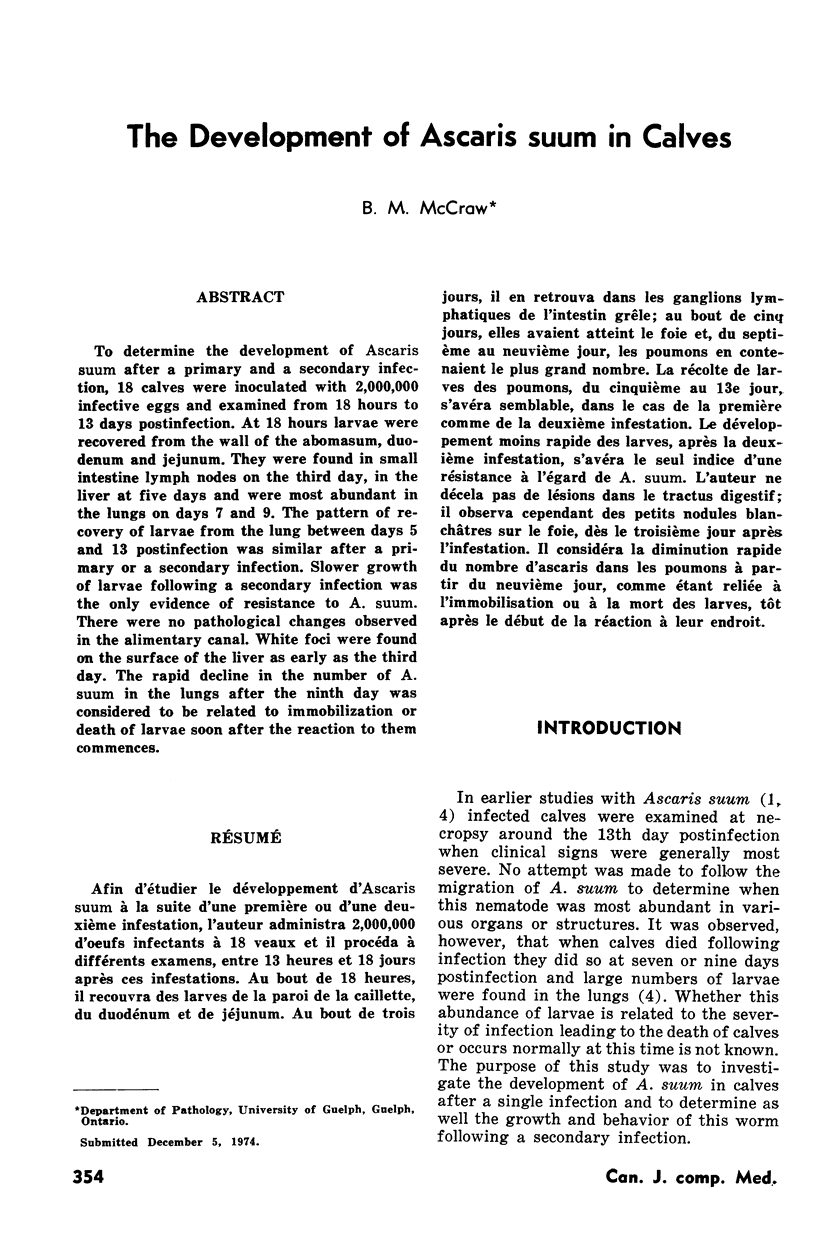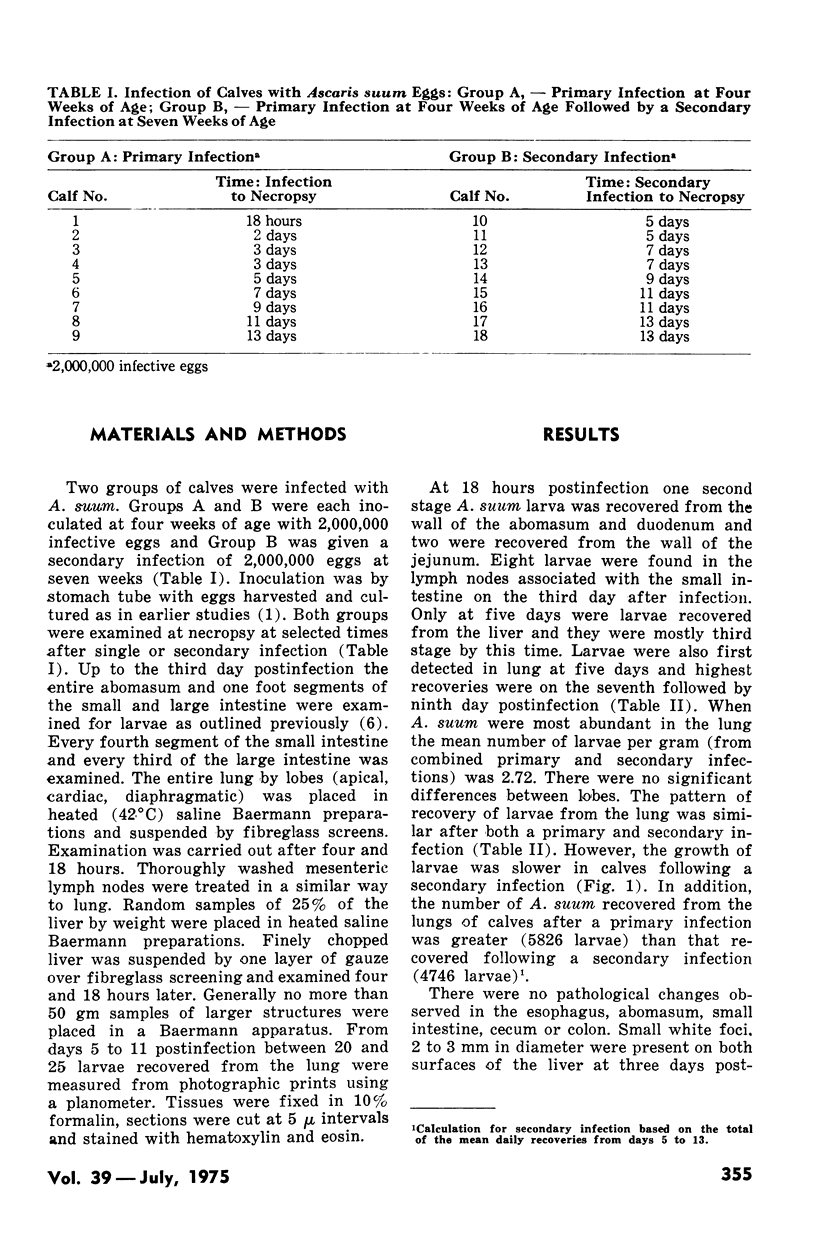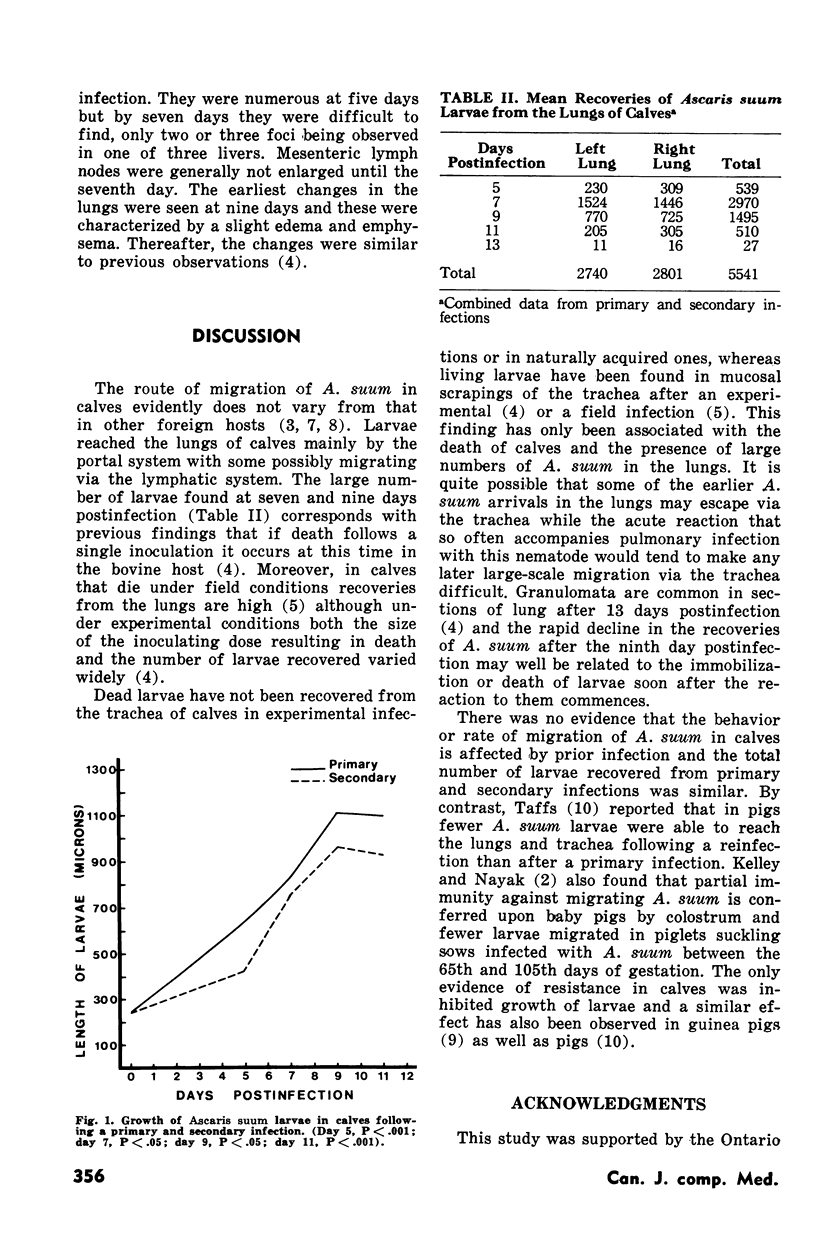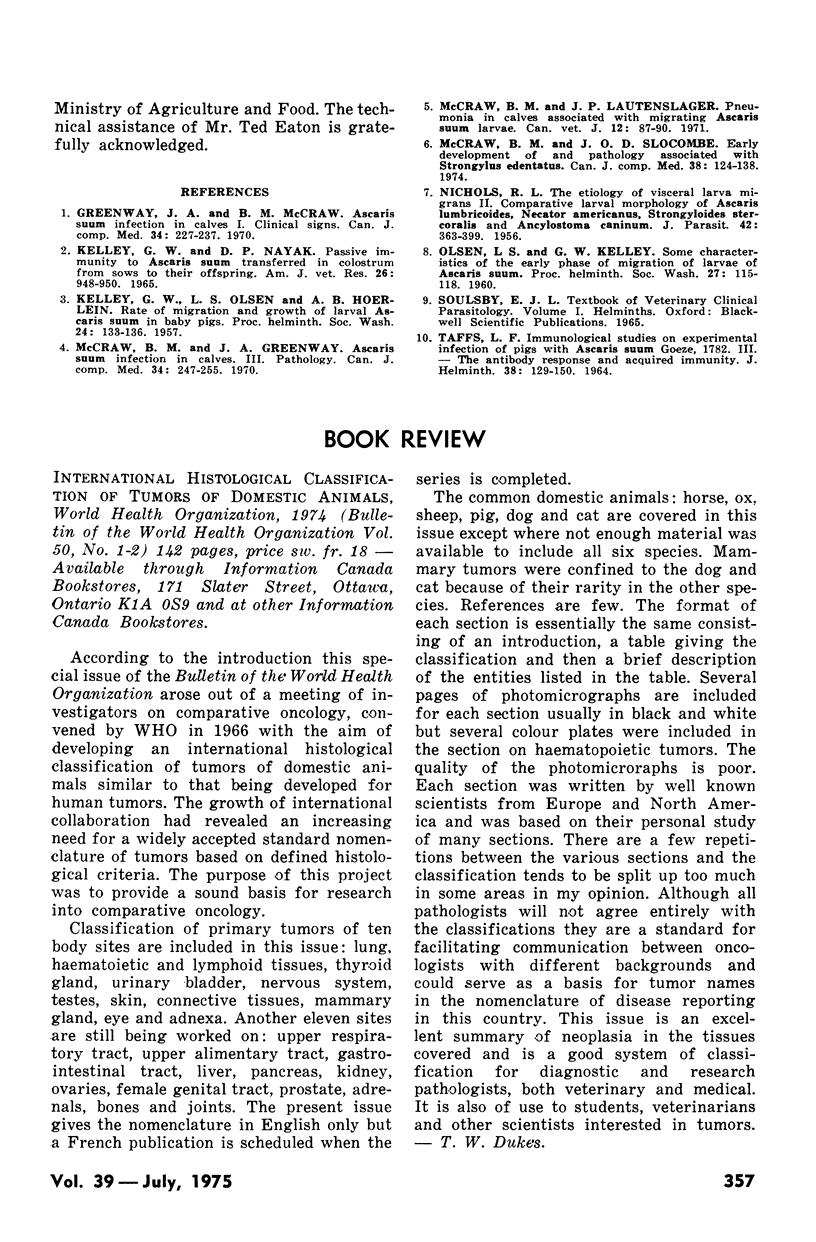Abstract
To determine the development of Ascaris suum after a primary and a secondary infection, 18 calves were inoculated with 2,000,000 infective eggs and examined from 18 hours to 13 days postinfection. At 18 hours larvae were recovered from the wall of the abomasum, duodenum and jejunum. They were found in small intestine lymph nodes on the third day, in the liver at five days and were most abundant in the lungs on days 7 and 9. The pattern of recovery of larvae from the lung between days 5 and 13 postinfection was similar after a primary or a secondary infection. Slower growth of larvae following a secondary infection was the only evidence of resistance to A. suum. There were no pathological changes observed in the alimentary canal. White foci were found on the surface of the liver as early as the third day. The rapid decline in the number of A. suum in the lungs after the ninth day was considered to be related to immobilization or death of larvae soon after the reaction to them commences.
Full text
PDF



Selected References
These references are in PubMed. This may not be the complete list of references from this article.
- Greenway J. A., McCraw B. M. Ascaris suum infection in calves. I. Clinical signs. Can J Comp Med. 1970 Jul;34(3):227–237. [PMC free article] [PubMed] [Google Scholar]
- Kelley G. W., Nayak D. P. Passive immunity to Ascaris suum transferred in colostrum from sows to their offspring. Am J Vet Res. 1965 Jul;26(113):948–950. [PubMed] [Google Scholar]
- McCraw B. M., Greenway J. A. Ascaris suum infection in calves. 3. Pathology. Can J Comp Med. 1970 Jul;34(3):247–255. [PMC free article] [PubMed] [Google Scholar]
- McCraw B. M., Lautenslager J. P. Pneumonia in calves associated with migrating Ascaris suum larvae. Can Vet J. 1971 Apr;12(4):87–90. [PMC free article] [PubMed] [Google Scholar]
- McCraw B. M., Slocombe J. O. Early development of and pathology associated with Strongylus edentatus. Can J Comp Med. 1974 Apr;38(2):124–138. [PMC free article] [PubMed] [Google Scholar]
- NICHOLS R. L. The etiology of visceral Larva migrans. II. Comparative larval morphology of Ascaris lumbricoides, Necator americanus, Strongyloides stercoralis and Ancylostoma caninum. J Parasitol. 1956 Aug;42(4 SECTION):363–399. [PubMed] [Google Scholar]
- TAFFS L. F. IMMUNOLOGICAL STUDIES ON EXPERIMENTAL INFECTION OF PIGS WITH ASCARIS SUUM GOEZE, 1782. III. THE ANTIBODY RESPONSE AND ACQUIRED IMMUNITY. J Helminthol. 1964;38:129–150. doi: 10.1017/s0022149x0003368x. [DOI] [PubMed] [Google Scholar]


